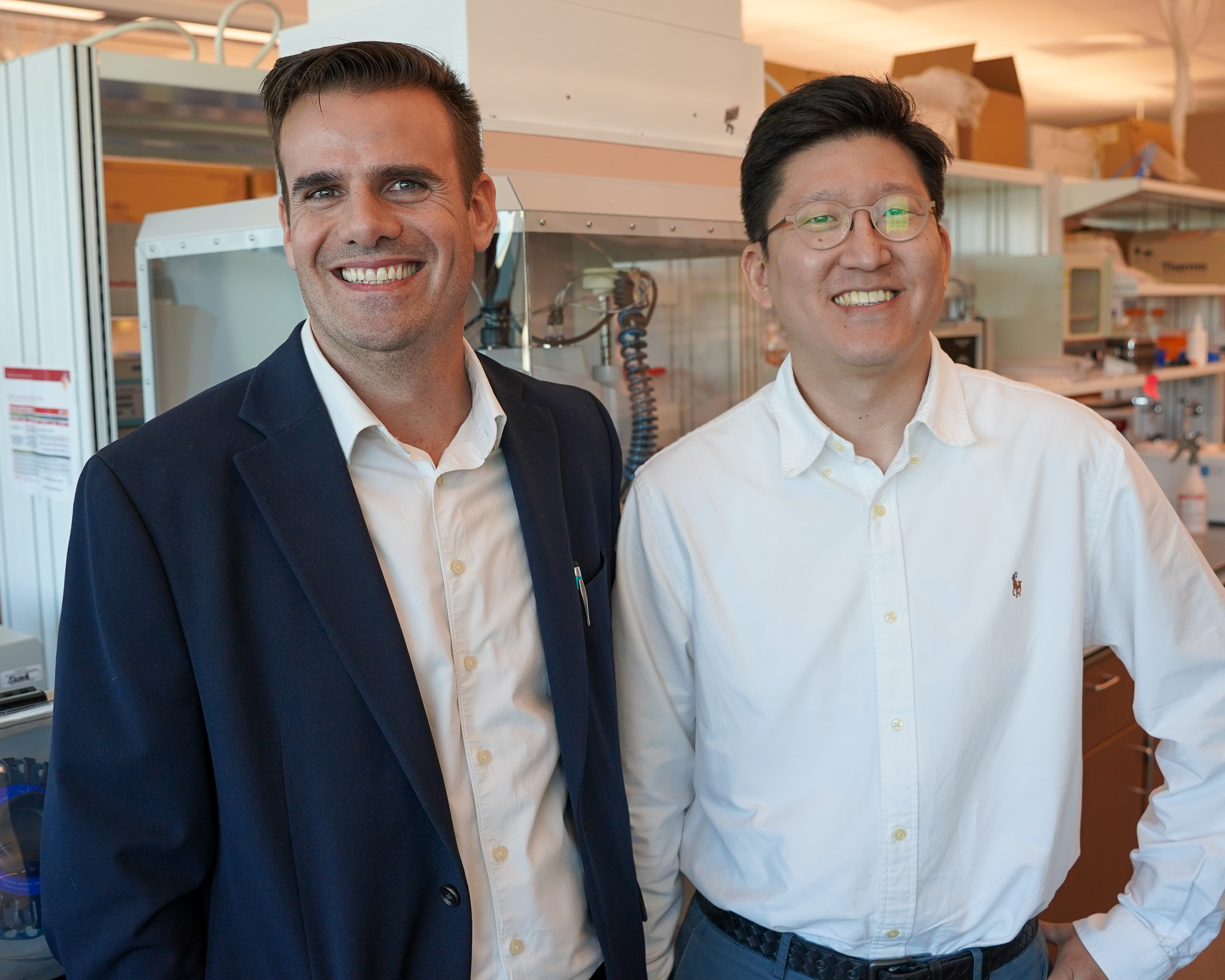Tuesday, October 15, 2024

Photo Credit: From left to right – HSC's Dr. Dimitrios Karamichos and Dr. Jayoung Kim
Researchers at The University of North Texas Health Science Center at Fort Worth are pioneering the use of 3D bioprinting technology to address keratoconus, a debilitating condition that affects the cornea and can lead to blindness.
The interdisciplinary effort, led by Drs. Dimitrios Karamichos and Jayoung Kim, could expand treatment options for patients suffering from this progressive vision disorder.
Keratoconus, a disease that causes the cornea to thin and bulge, affects as many as one in 300 people globally. This condition not only impairs vision but also can lead to severe complications, including blindness, if left untreated.
“The rate of progression varies from patient to patient,” said Karamichos, interim dean of HSC’s College of Biomedical and Translational Sciences and executive director of the North Texas Eye Research Institute. “It could accelerate to severe stages quickly. At that point, the patient would require treatment.”
While treatments like corneal cross-linking – which strengthens the cornea by using special eye drops and light to “stiffen” it for increased stability – are available, they are often limited to specific stages of the disease and not suitable for all patients. The HSC team’s research is working to change that.
Kim, an expert in bioengineering and assistant professor of pharmaceutical sciences in HSC’s College of Pharmacy, is working alongside Karamichos to use 3D bioprinting technology to develop personalized biocompatible devices that can be worn on the eye during treatment. This technology allows researchers to print structures using materials similar to living tissue, which can be used in the body to repair or treat organs and tissues.
This innovation could enable more people with keratoconus to receive treatment. Currently, collagen cross-linking is limited because of the complexity of the procedure and the constraints of existing treatment devices.
“Our approach to this problem is to create on-demand 3D bioprinted medical devices that can be worn on the eye during the collagen cross-linking application to prevent damage,” Kim said. “The geometry of the device can be customized to match each patient’s eye curvature and will be made from biocompatible materials.”
The groundbreaking project is supported by HSC’s Team Science grant program, which fosters collaboration among researchers from diverse scientific backgrounds. The program, funded by HSC’s Division of Research and Innovation, enables scientists to pursue novel solutions to complex health problems.
Dr. Brian Gladue, HSC’s executive vice president for research and innovation, said the team’s work exemplifies the potential of interdisciplinary research in addressing unmet medical needs.
“While artificial intelligence receives a lot of buzz, real-time customized bioprinting like this represents a major breakthrough for the precision medicine toolkit, particularly for vision health,” Gladue said.
The researchers have partnered with HSC software engineers specializing in bioprinting. The team is collecting preliminary data to submit an application for federal funding. If successful, the project could lead to long-term research initiatives and significant advancements in the treatment of keratoconus and other vision disorders, Karamichos said.
From HSC Newsroom - Research by Nicole Luna